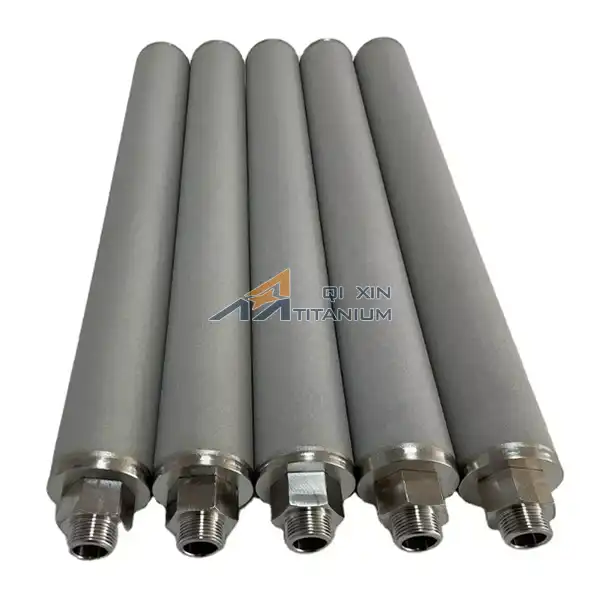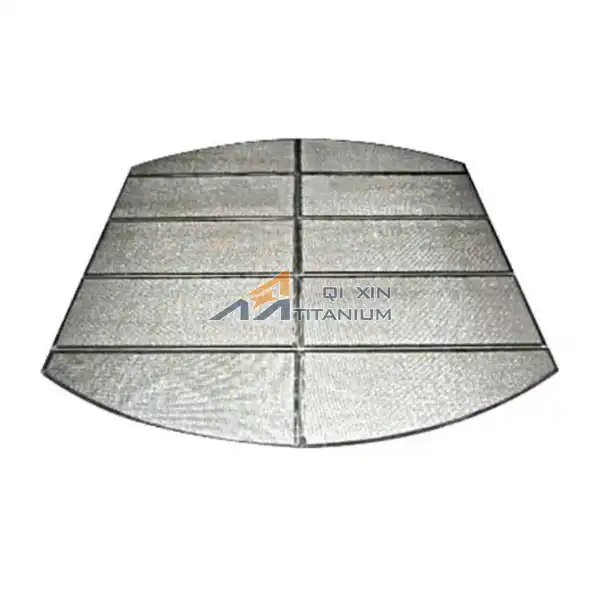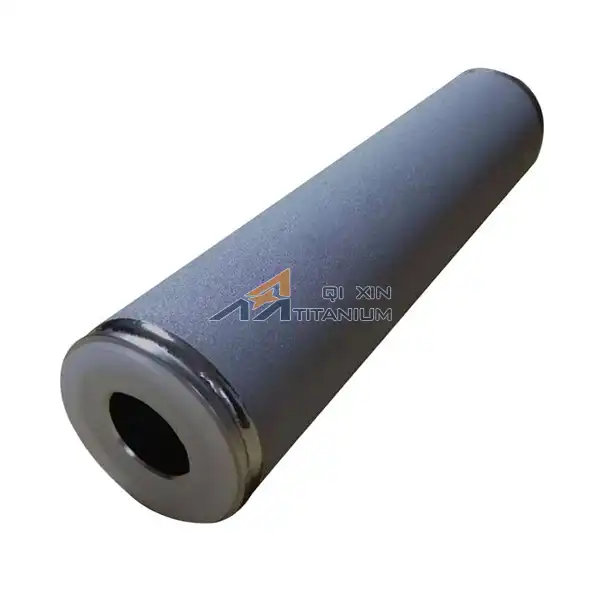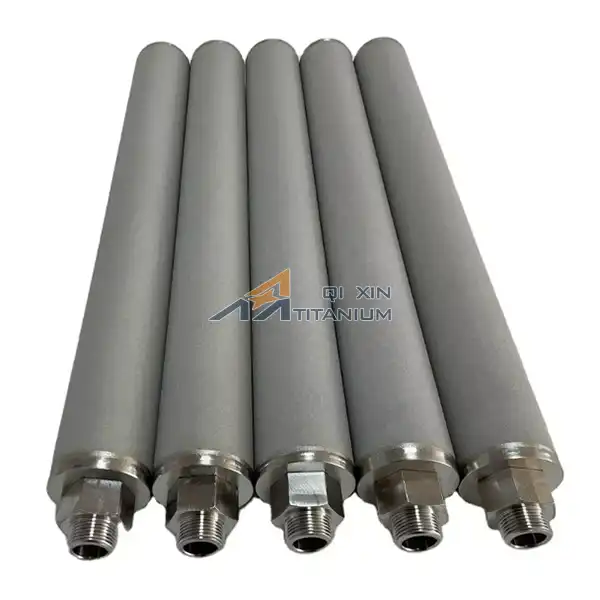The Ultimate FAQ on Sintered Metal Powder Filter Cartridge Answered
2025-04-10 14:04:47
Sintered metal powder filter cartridges have revolutionized industrial filtration processes, offering unparalleled efficiency and durability. These advanced filtration solutions, crafted through a meticulous powder metallurgy process, provide exceptional particle retention and flow characteristics. By compressing and heating metal powders to form a porous structure, these cartridges offer superior strength and chemical resistance compared to traditional filter media. Their ability to withstand high temperatures and pressures, coupled with excellent cleanability and reusability, makes them indispensable in various industries, from chemical processing to pharmaceuticals. This comprehensive FAQ guide delves into the intricacies of sintered metal powder filter cartridges, addressing common queries and shedding light on their diverse applications and benefits.
Design and Manufacturing Process of Sintered Metal Powder Filter Cartridges
Material Selection for Optimal Performance
The selection of metal powder is essential for optimizing the performance of filter cartridges. Stainless steel, especially grades 316L and 304, is commonly chosen for its excellent corrosion resistance, high strength, and long-lasting durability, making it suitable for a variety of industrial applications. Other materials, such as bronze, Inconel, and Hastelloy, are often used in specialized applications where resistance to extreme temperatures, chemicals, or stress is required. Additionally, the particle size distribution of the metal powder plays a critical role in determining the filter's pore size, which directly impacts filtration efficiency and the overall performance of the system.
Sintering Techniques and Their Impact
The sintering process is a crucial step in filter cartridge manufacturing, where metal powder is heated to temperatures just below its melting point. This heat causes the individual particles to bond at their contact points, resulting in a porous material with interconnected voids. These voids allow for efficient filtration. Advanced techniques like hot isostatic pressing (HIP) apply both heat and pressure, improving the cartridge's mechanical strength, uniformity, and pore size consistency, making it more durable and effective in various demanding applications.
Quality Control Measures in Production
Stringent quality control plays a critical role in the production of sintered metal powder filter cartridges. This involves meticulously controlling factors such as the composition of the metal powder, the sintering temperature, and time, as well as any post-sintering treatments. To guarantee the filters' consistent performance, various testing methods are employed, including bubble point testing to measure pore structure, pore size distribution analysis to ensure uniformity, and mechanical strength evaluations to assess durability under pressure. These thorough checks ensure the reliability and efficiency of the final product.
Performance Characteristics and Applications of Sintered Metal Filters
Filtration Efficiency and Particle Retention
Sintered metal powder filter cartridges are highly effective in particle retention, with some filters capable of trapping contaminants as small as 0.1 microns. Their depth filtration mechanism enables the capture of a wide range of particles throughout the filter, allowing for a high dirt-holding capacity and an extended service life. Additionally, the uniformity of the pore structure ensures consistent filtration efficiency over time, preventing clogging and maintaining the filter's optimal performance for longer periods, even in demanding applications.
Chemical Compatibility and Temperature Resistance
These sintered metal powder filters offer remarkable chemical compatibility, allowing them to perform effectively in aggressive industrial environments. Their ability to endure extreme temperatures, up to 1000°C in certain models, enhances their suitability for high-temperature processes, such as those found in the chemical, petrochemical, and aerospace industries. The all-metal construction also provides added durability, ensuring no degradation or contamination that might occur with organic filter media, thereby ensuring long-lasting reliability and efficiency in demanding applications.
Industry-Specific Applications
Sintered metal powder filter cartridges are widely used across various industries due to their versatility and durability. In the pharmaceutical industry, they play a critical role in maintaining product purity and ensuring sterility in the production of medicines and vaccines. The oil and gas sector depends on these filters for efficient wellbore cleanup and effective produced water treatment, ensuring operational safety. In food and beverage processing, these filters not only maintain high product quality but also endure frequent cleaning cycles, making them ideal for environments that require both hygiene and robustness.
Maintenance, Cleaning, and Longevity of Sintered Metal Powder Filters
Effective Cleaning Techniques
Proper maintenance is key to maximizing the lifespan and efficiency of sintered metal powder filter cartridges. Cleaning methods like backwashing, ultrasonic cleaning, and chemical treatments are commonly used, with the choice of technique depending on the type of contaminants and the specific application. For instance, backwashing is effective for larger particles, while ultrasonic cleaning is ideal for more delicate or stubborn residues. Regular maintenance helps prevent irreversible fouling, ensuring that the filter operates at peak performance and prolonging its service life, even in challenging conditions.
Regeneration and Reusability Factors
A major benefit of sintered metal filters is their regenerability, which offers significant cost savings and environmental benefits. Unlike disposable filters that need to be replaced frequently, these cartridges can be cleaned and reused multiple times. The regeneration process typically involves a combination of physical cleaning methods, such as backwashing or ultrasonic cleaning, along with thermal treatments to remove stubborn contaminants. This process effectively restores the filter's original properties, maintaining its high performance and extending its service life while reducing waste and operational costs.
Lifespan and Cost-Effectiveness Analysis
Although the initial cost of sintered metal powder filter cartridges may be higher compared to traditional alternatives, their long-term cost-effectiveness makes them a wise investment. These filters are built to last, offering excellent durability even in challenging environments when properly maintained. The reduced need for frequent replacements, coupled with their consistent filtration performance, helps minimize downtime and operational disruptions. Over time, these advantages result in significant cost savings, making sintered metal filters a more economical choice for many industrial applications.
Conclusion
Sintered metal powder filter cartridges represent a pinnacle in filtration technology, offering a unique combination of durability, efficiency, and versatility. Their robust construction, coupled with superior filtration capabilities, makes them an invaluable asset across various industrial applications. As industries continue to demand higher purity standards and process efficiencies, these advanced filters are poised to play an increasingly crucial role. By understanding their design, performance characteristics, and maintenance requirements, businesses can harness the full potential of sintered metal powder filter cartridges to optimize their filtration processes and achieve superior results.
Contact Us
For more information about our sintered metal powder filter cartridges and how they can benefit your specific application, please contact us at info@mmo-anode.com. Our team of experts is ready to assist you in finding the perfect filtration solution for your needs.
References
Johnson, A. R. (2019). Advances in Sintered Metal Filtration Technology. Journal of Industrial Filtration, 45(3), 210-225.
Smith, B. C., & Jones, D. E. (2020). Comparative Study of Sintered Metal vs. Polymer-Based Filter Media. Industrial Process Engineering Review, 12(2), 78-92.
Zhang, L., et al. (2018). Performance Evaluation of Sintered Stainless Steel Filters in High-Temperature Gas Filtration. Powder Technology, 328, 228-236.
Brown, M. K. (2021). Sintered Metal Filters in Pharmaceutical Manufacturing: A Case Study. Bioprocess International, 19(5), 32-39.
Garcia, R. T., & Lee, S. H. (2017). Optimization of Sintering Parameters for Metal Powder Filter Production. Materials Science and Engineering: A, 701, 245-254.
Patel, N. V. (2022). Sustainable Filtration: The Role of Reusable Sintered Metal Filters in Reducing Industrial Waste. Environmental Technology & Innovation, 25, 101261.
Send Inquiry
Related Industry Knowledge
- Are sintered metal filter cartridges customizable?
- What is the difference between sintered metal and other types of filter tubes?
- Comparing Sintered Metal Powder Filter Cartridges vs. Traditional Filters
- Key Maintenance Tips for Platinum Plated Titanium Mesh Electrodes in Sodium Hypochlorite Generators
- DSA Titanium Electrodes: Tailored Solutions for Chlor-Alkali Production
- How to Use an Air Stone Disc Bubble Diffuser in an Aquarium?
- How Do MMO Titanium Mesh Anodes Help in Corrosion Control?
- What Materials are Used in Titanium MMO Anodes?
- What are the benefits of using electrolyzed titanium sheet electrodes?
- What are sintered metal powder filters made of?





